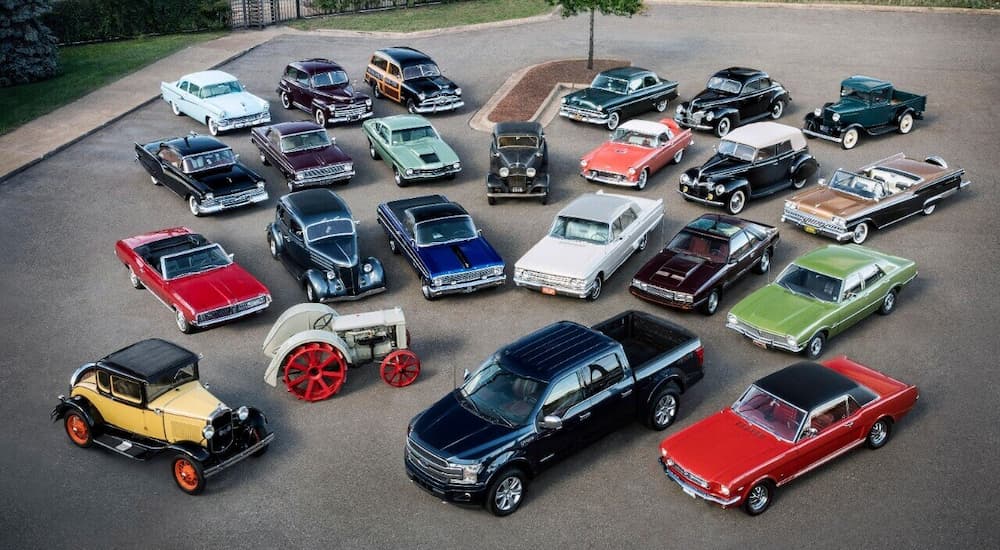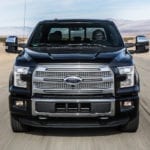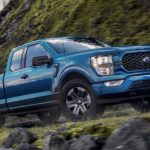Whether you like it or not, advertising is all around us: it pervades print media, television, the Internet (I certainly don’t have to tell you that), and even the world we live in. No matter where you look, you’ll probably see a commercial somewhere around you, which means that advertising is not only a part of life, but it reflects life. Whether they’re successful in getting you to head to your local Ford dealer or not, Ford advertising has been a part of the auto industry and the American lifestyle for generations.
Over the last 70 years, the look and feel of Ford commercials have changed a lot – seriously, a lot. This isn’t just true of Ford, of course, since commercials reflect the world around us, and they change over time to better connect with their audience. To see just what I mean, let’s take a look at seven different Ford commercials, each from a different decade over the last 70 years. These aren’t the only commercials from those decades, by any means, but they’re an interesting and fun look at what Ford’s marketing people thought would connect with their buyers.

The 1950s: Two Fords are Better than One
First up, we have one of the most quintessential ’50s things I’ve ever seen; if I didn’t know this was an actual commercial, I’d think it was a brilliant parody. Of course, this is exactly why parody looks like this. From the stereotypical 1950s housewife with her husband who works to the way it starts with her on the phone – everything about this just drips the 1950s.
Ultimately, it’s an interesting message that probably rang true for a lot of people at the time – appealing to those in the midst of the post-war rush to the suburbs. I can’t help but notice the guy gets the flashy model while she gets the wagon – you still see that idea today with sports cars marketed toward men and SUVs angled as the family vehicle. In particular, I like the alliteration of, “…enjoy all the fun and freedom of two fine Fords.” The narration at the end is just the cherry on the top of this and absolutely screams 1950s.

The 1960s: “Here is Visual Proof”
Even though this was made nearly 60 years ago, I actually think it’s pretty ingenious. Here we see Ford’s marketing department really connect with the fact that TV is a visual medium that allows for advertising that you can’t do in a magazine or on the radio. That 1950s commercial was great, but the audio could’ve been used on the radio and worked just as well; there’s not much that’s really TV-centric about it.
With this one, however, you can see advertising taking advantage of what television has to offer. The visual demonstration works perfectly, and this was something Ford continued to do in their commercials for years after. It feels like there’s a real connection here with the audience and this commercial: an acknowledgment that people like to feel informed by the ads they see, so it’s almost presented like a science lesson while still being accessible.

The 1970s: The Power of Nostalgia
This advertisement from the 1970s really clicked with me because it showcases that even some 50 years ago, marketers understood the appeal of nostalgia. Here you have a clear homage or reference to the silent film era, in particular, the movies of Charlie Chaplin as his Tramp character. When this aired, only about half of US households had color TVs, so this ad would’ve played just as well in black and white and in color.
It’s also interesting that up until the very end, there’s no spoken audio. So the music would’ve made it really stand out compared to other TV ads to grab people’s attention. Then the visuals would hold that attention, and you’d easily forget you’re even watching a commercial right up until the conclusion. I bet it worked pretty well.

The 1980s: No Stranger to Grandiose Displays
Although this isn’t the first Ford commercial to have a grandiose display to demonstrate Ford power, I think it’s a great example. They start off by referencing their previous ad campaign that showcased a Ford truck carrying a Chevy truck – then they build on that to outdo themselves. This is something Ford has done time and again in their advertising both before and after this.
Just two years ago, when they first revealed the Ford F-150 EV (now called the Lightning), they had it towing 1 million lbs. of weight behind it to showcase how powerful it would be. I’m not sure these kinds of displays really work, but they keep doing them, so they must be at least somewhat effective. Still, this is the perfect example of how Ford has commonly advertised their trucks by having them beat their competition.

The 1990s: Tapping into the Sci-Fi Craze
This commercial is beautifully ridiculous and perfectly reflects the style, aesthetic, and attitude of the 1990s. I remember seeing this when I was younger; it didn’t really work on me since I wasn’t thinking about cars yet, but it still stood out as a commercial. Now, looking back, I can’t help but wonder if it was also trying to grab onto some of the sci-fi craze of the 1990s.
Also, let’s take a moment to reflect on the vehicles they chose. First, they speculate about a world where everyone can slam dunk and gets a Ford Ranger; they end with everyone working at the beach and getting a Mustang as a company car. Both seem like pretty good fantasies – but in the middle, you have everything just costing a buck, so everyone’s rich, and we have to decide on what color Ford Probe to drive. So in a world where everyone’s impossibly wealthy, we all drive Probes? Bold statement, Ford.

The 2000s: Drive Every Week like it’s Shark Week
I remember this commercial too, and my favorite part of it, personally, is the need for the giant “Dramatization” text at the very beginning. Thank goodness Ford let us know that we shouldn’t really drive the Ford Expedition underwater among a massive school of sharks. While I get that it’s meant to emulate the idea of other vehicles hitting you in a collision – the shark metaphor is still kind of weird. I feel like the intent was to avoid any negative images of vehicles colliding while still pushing safety in a way that didn’t evoke thoughts of high-speed crashes.

The 2010s: Big, Flashy, and In-Your-Face
This is just one of what felt like a thousand Ford truck commercials that all used a similar format, so I felt this was the perfect example of Ford advertising from the past decade. Denis Leary was the voice of Ford truck commercials for the better part of two decades, so these were the ads we saw throughout most of the 2010s. They all had the same brash, in-your-face style to them, and he offered the same basic delivery in each one.
I think these were pretty effective – they went with it for years, so they must’ve been working. I assume Ford truck drivers connected with Leary’s style of aggressive delivery and the rapid-fire imagery evokes the worst excesses of the MTV generation. Still, they were pretty much impossible to ignore, and at the end of the day, that’s exactly what most advertisers are looking for. With more viewing going to the Internet, with media like YouTube and other streaming services taking over, it will be interesting to see how that shapes Ford commercials over the next decade. Whatever we end up with, however, I don’t doubt that it will be memorable and probably result in a meme or two along the way.




